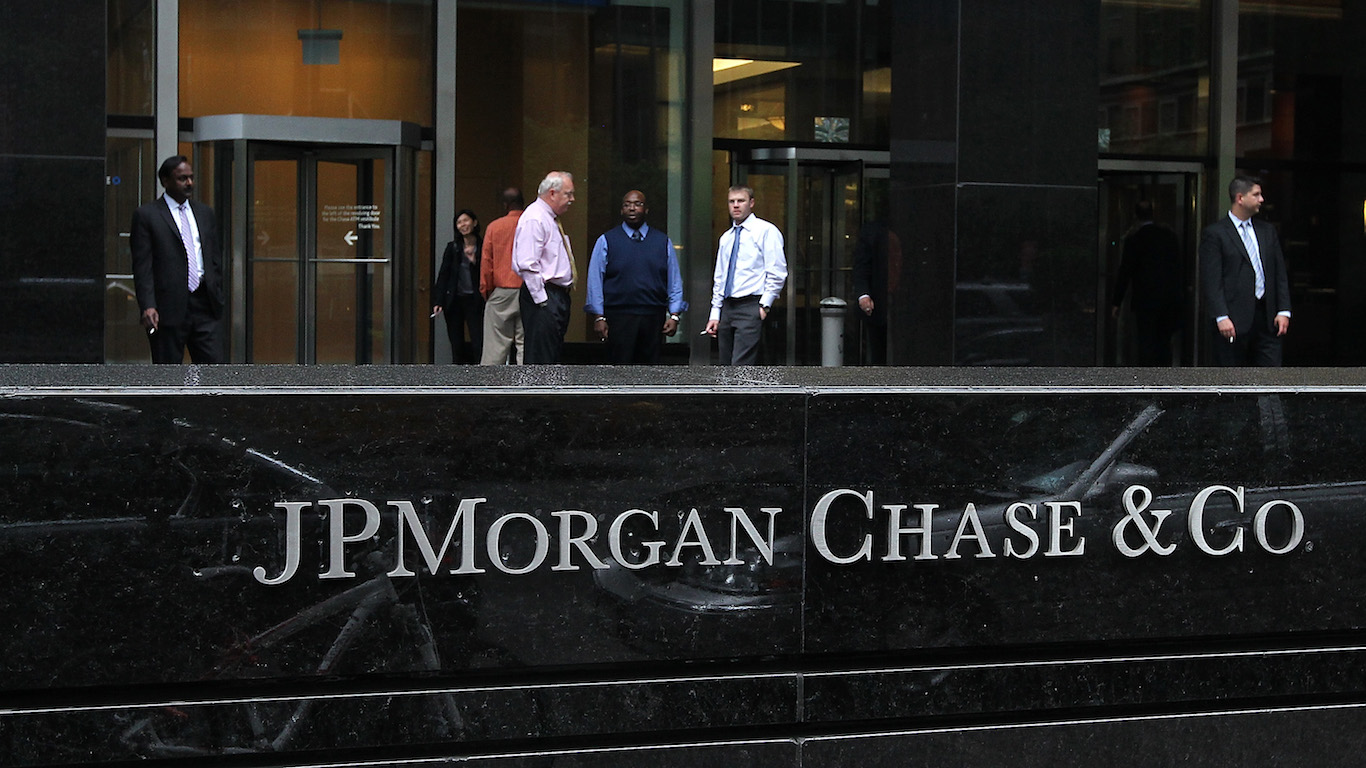Banking, finance, and taxes
How JPMorgan Boosted Q3 Profits Despite Low Interest Rates

Published:
Last Updated:

JPMorgan Chase & Co. (NYSE: JPM) reported third-quarter 2019 results before markets opened Tuesday. The investment bank and financial services giant reported diluted earnings per share (EPS) of $2.68 on managed (adjusted) revenue of $30.06 billion. In the same period a year ago, the big bank reported EPS of $2.34 on managed revenue of $27.82 billion. Third-quarter results also compare to the consensus estimates for EPS of $2.45 on revenue of $28.49 billion.
In a presentation accompanying its press release, JPMorgan said it expects net interest income for the fiscal year to come in at around $57.5 billion, unchanged from the previous outlook. The bank also said it expects adjusted expenses for the year to total approximately $65.5 billion and net charge-offs to come in at around $5.5 billion. Both were essentially unchanged.
Quarterly profits rose by 8% from $8.38 billion in the third quarter of 2018 to $9.08 billion. Net interest income totaled $14.4 billion, up 2%, driven by balance sheet growth and mix and largely offset by low interest rates.
Noninterest revenue reached $15.7 billion, up 14% year over year. The bank attributed the year-over-year increase to a $350 million gain from home loan sales and a boost of 25% in fixed income markets to $3.6 billion, driven by “strong client activity across products.”
Provision for credit losses totaled $1.51 billion, an increase of 8% year over year and a drop of 6% sequentially.
By divisions, net income in the consumer and community banking group rose by 5% year over year to $4.27 billion, commercial banking net income fell by 8% to $996 million and asset management group net income fell 5% to $719 million for the quarter.
Corporate and investment banking group net income rose 7% to $2.81 billion, and revenues were up 6% to $9.34 billion. Markets revenue of $5.1 billion was up 14%, “driven by higher debt and equity underwriting fees, partially offset by lower advisory fees, and reflected wallet share gains across products.” Provision for credit losses in the group fell to $92 million, compared to a net gain of $42 million in the prior-year quarter.
Bank CEO Jamie Dimon said:
In the U.S. economy, GDP growth has slowed slightly. The consumer remains healthy with growth in wages and spending, combined with strong balance sheets and low unemployment levels. This is being offset by weakening business sentiment and capital expenditures mostly driven by increasingly complex geopolitical risks, including tensions in global trade.
The bank did not offer guidance in its press release, but the consensus estimates call for fourth-quarter EPS of $2.27 on revenues of $27.53 billion. The EPS estimate for the 2019 fiscal year is $10.19 on revenues of $114.61 billion.
The big bank was able to offset low interest income by charging higher fees and drumming up more fixed income business. Neat trick.
Shares traded up by about 1.8% in Tuesday’s premarket at $118.58. The current 52-week range is $91.11 to $120.40. The consensus 12-month price target was $119.58 before results were announced.
If you’re one of the over 4 Million Americans set to retire this year, you may want to pay attention.
Finding a financial advisor who puts your interest first can be the difference between a rich retirement and barely getting by, and today it’s easier than ever. SmartAsset’s free tool matches you with up to three fiduciary financial advisors that serve your area in minutes. Each advisor has been carefully vetted, and must act in your best interests. Start your search now.
Don’t waste another minute; get started right here and help your retirement dreams become a retirement reality.
Thank you for reading! Have some feedback for us?
Contact the 24/7 Wall St. editorial team.